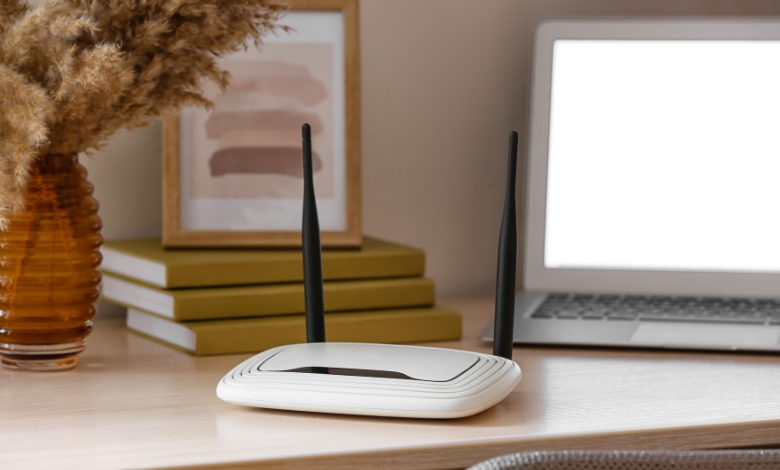Master the BGW320-500 setup with IP Passthrough and Public Subnet. Detailed, actionable tips for seamless network performance.
What You’ll Learn
This article will unpack the intricacies of configuring the BGW320-500 gateway with a public subnet using IP Passthrough. We’ll explore everything from setup instructions to real-world applications. Whether you’re a tech enthusiast or a small business owner looking to optimize internet speed for your home network, you’ll leave with clear, actionable insights.
Article Breakdown
Understanding the BGW320-500 Gateway
The BGW320-500 is no ordinary gateway. Designed for robust performance, it’s the backbone of many high-speed internet setups. But why is it so popular? For one, it supports features like Wi-Fi 6 and fiber internet, which make it a powerhouse for residential and small office environments.
Why Public Subnets Matter
Public subnets assign IP addresses that are directly accessible from the internet. This setup is essential for hosting services, remote access, or any scenario requiring external devices to communicate with your network.
What Is IP Passthrough?
Think of IP Passthrough as a bypass lane on a highway. Instead of the gateway handling traffic, it hands over control to a connected device, usually a router. This minimizes interference and maximizes flexibility in network management.
The Perfect Marriage: Public Subnet and IP Passthrough
Combining a public subnet with IP Passthrough isn’t just a cool trick—it’s a strategic move. It allows you to leverage public-facing IPs while maintaining the performance benefits of direct routing. This configuration is particularly valuable for gamers, businesses, and advanced users who need consistent, high-performance connectivity.
Step-by-Step Guide to Configure BGW320-500 with IP Passthrough
Let’s get to the meat of the matter—setting up your BGW320-500 for public subnet functionality with IP Passthrough.
Preparation Checklist
Before diving in, gather the following:
- Your ISP-provided IP details: This includes the public IP range, subnet mask, gateway IP, and DNS information.
- A connected device for configuration: A PC or laptop works best.
- An understanding of your network goals: Are you hosting servers or optimizing for gaming? Knowing your end goal helps fine-tune the setup.
Accessing the Gateway Interface
- Connect to the BGW320-500
Use a wired connection for stability. Enter 192.168.1.254 into your browser to access the gateway interface. - Log in
Enter the credentials printed on your device. If you changed the password earlier, use your custom credentials.
Enabling Public Subnet
- Navigate to the Home Network tab and select Subnets & DHCP.
- Locate the Public Subnet section.
- Enable the feature and input the provided public IP range. Ensure the details align with what your ISP provided.
- Save the changes.
Configuring IP Passthrough
- Switch to the Firewall tab, then choose IP Passthrough.
- Select the Allocation Mode as “Passthrough.”
- Under Passthrough Mode, pick “DHCPS-fixed.”
- Choose the MAC address of the device that will manage the public subnet (usually your secondary router).
- Save the configuration and restart the gateway.
Testing the Setup
- Verify Public IP Assignment
Check if the external-facing device has been assigned a public IP. You can use tools like whatismyipaddress.com. - Network Diagnostics
Run a ping test or traceroute to ensure proper routing. - Optimize for Performance
Adjust any firewall settings to balance security and usability.
Common Challenges and How to Solve Them
Issue: Device Not Getting Public IP
Solution: Double-check the MAC address in the IP Passthrough settings. Also, ensure your device is set to receive an IP via DHCP.
Issue: Connectivity Drops
Solution: Verify that the public subnet IP range and gateway are correctly configured. Rebooting all connected devices can often fix intermittent issues.
Issue: Double NAT Problems
Solution: IP Passthrough effectively eliminates double NAT. If issues persist, review your router’s settings to ensure there’s no residual interference.
Real-World Applications
Small Business Use
If you’re running a small office, this setup ensures that servers and services like VoIP systems are directly accessible to external clients without compromising speed.
Gaming and Streaming
Gamers often face latency issues due to multiple layers of network management. With this configuration, you’ll enjoy a more direct connection, cutting down on lag.
Advanced Home Networks
For enthusiasts setting up smart homes with extensive IoT devices, the combination of a public subnet and IP Passthrough makes management a breeze.
Pro Tips for Optimizing Your Setup
- Document Everything: Keep a record of all configurations and settings. It’ll save time during troubleshooting.
- Use Static Assignments: For critical devices, assign static IPs within the public subnet to avoid conflicts.
- Invest in a Good Router: The BGW320-500 shines with a capable partner device managing your network.
Key Takings
- Public subnets and IP Passthrough on the BGW320-500 enhance both connectivity and performance.
- Proper configuration is crucial—always double-check your IP range and settings.
- Applications range from gaming to business, making it versatile for various needs.
- Troubleshooting common issues involves verifying settings and restarting devices.
- Advanced users can optimize setups with static assignments and robust routers.
Additional Resources:
- AT&T Fiber BGW320-500 – IP Passthrough Configuration (Reddit): A detailed discussion on configuring IP Passthrough for the BGW320-500, shared by users on Reddit.
- BGW320-500 Bridge Mode and/or IP Passthrough Question (UI Community): A community thread exploring bridge mode and IP Passthrough setup for the BGW320-500.



